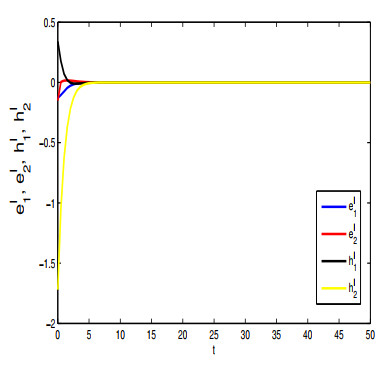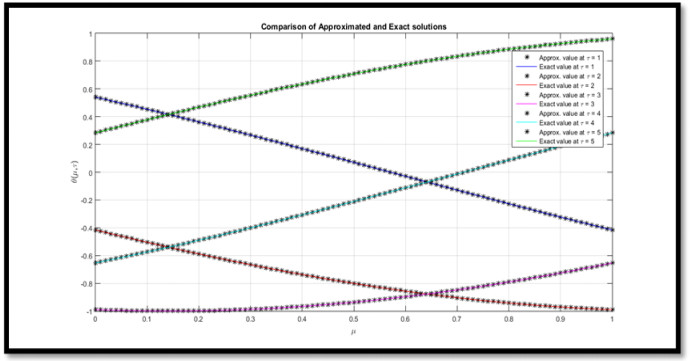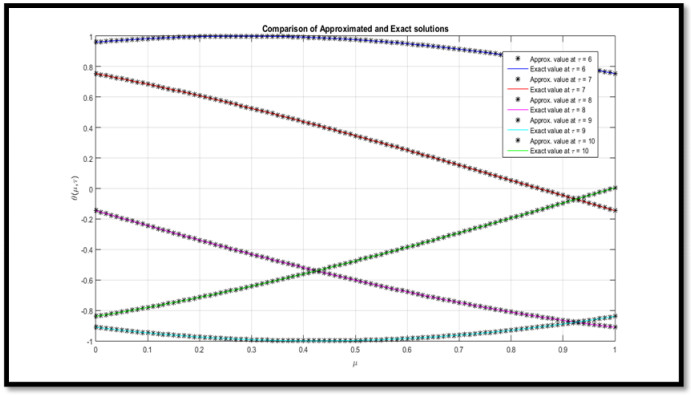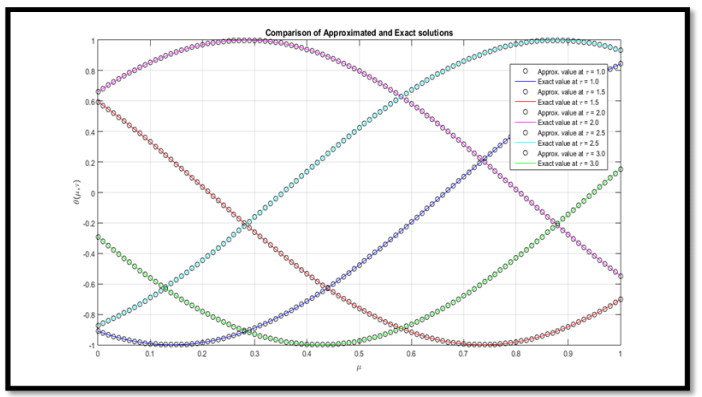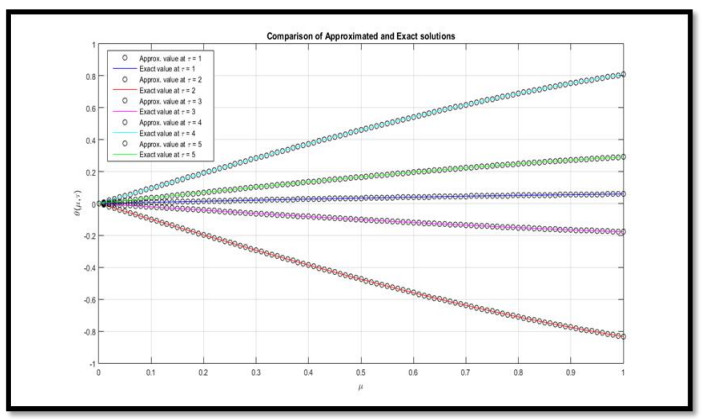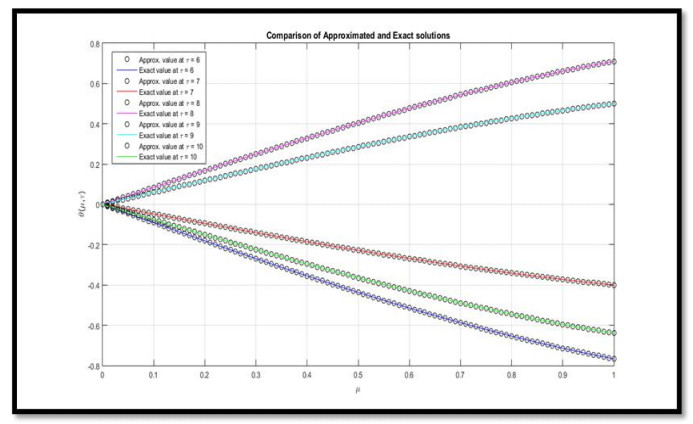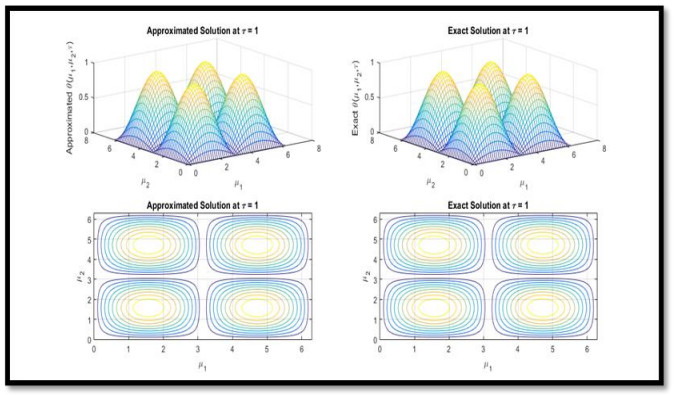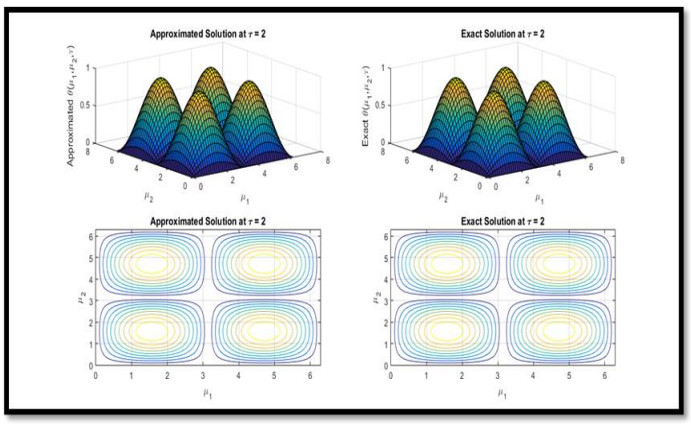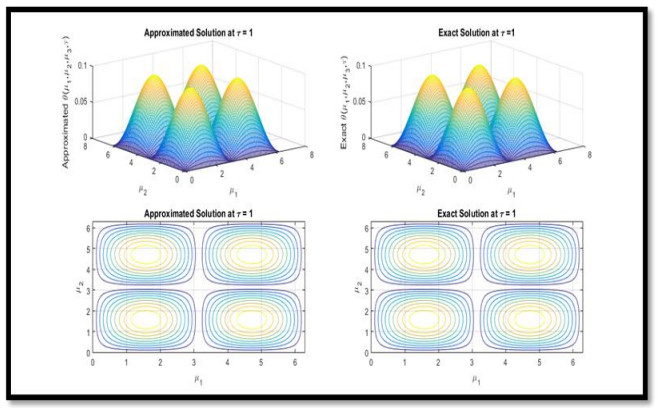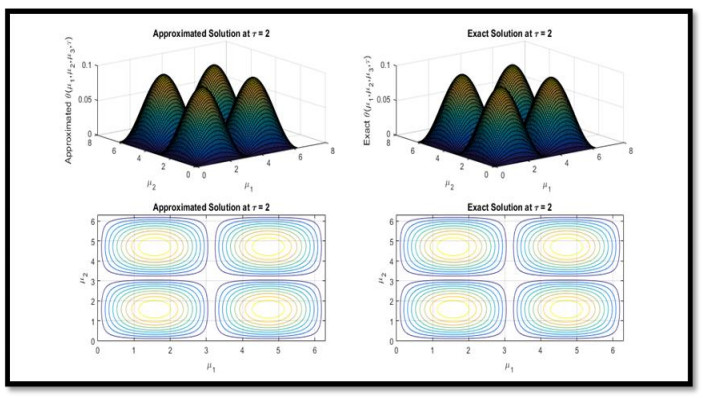1.
Introduction
Since it was first put forward by Chua[3], memristor has attracted increasing attention in recent years[19,16]. As the fourth fundamental circuit element except resistor, inductor, and capacitor in circuity, the prototype of practical memristor device was successfully developed by Hewlett-Packard Labs in 2008[17]. Moreover, memristor has many good properties, such as low power consumption, high density and good scalability. More importantly, the connection weight of the memristor is not fixed, it depends on the voltage applied in the corresponding state. Therefore, many researchers hope to use memristor as an artificial synapse to build a device similar to brain function. In view of its good charzcteristic, now memristor has been widely used to model memristor-based neural networks(MNNs)[24,6,15].
As a collective dynamical behavior, synchronization extensively exists in life, society and neural systems. Synchronization plays important role in the activity of the brain and nervous system[14]. So synchronization of memristor-based neural networks is significant[22,1]. Liao et al.[22] discussed effects of initial conditions of memristor synapses on the synchronization of the coupled memristor neural circuits. Theoretical analysis and simulations show that the memristor synapse has played an important role in the synchronization of the coupled FitzHugh-Nagumo neural circuits. Ascoli et al.[1] found that the history of the memristor plays a critical role in the synchronous oscillations in the network and enhance synchronizaiton.
In recent years, neurals networks have attracted a lot of researchers in different research areas[20,21,4,27,7,8]. It is worth mentioning that MCNNs with different time scales, which are extensions of conventional neural networks. It is a kind of unsupervised learning neural networks, which refers to the whole interconnection between input and output of the single layer neural networks[25]. MCNNs contain two types of state variables, including the aspects of long-term memory (LTM)and short-term memory(STM)[10], corresponding to the fast changes of the neural network states and the slow changes of the synapses by external stimuli, respectively. And up to now, various dynamical behaviors for competitive neural networks have been investigated[6,15,12,11,13] and have been successfully applied to control theory, signal processing, pattern recognition and optimization design and so on[25,11].
We noticed that the results mentioned above have been achieved within the real number domain. However, as we all know, sometimes, it is unreasonable to deal with some problems only in the real number domain, such as symmetry detection, XOR problems, electromagnetic wave imaging and so on[23,18], which are more convenient and reasonable to deal with complex-value system. Thus, it is meaningful to study MCNNs as the generalization and extension for real-valued systems. In recent years, people have made a lot of achievements[9,26,2] in the field of complex number. Liu et al.[9] discussed global anti-synchronization of CMNNs with time delays by constructing an appropriate Lyapunov function. The proposed results of this paper are less conservative than existing literatures due to the characteristics of complex-valued memristive neural networks(CMNNs). Zhu et al.[26] investigated the synchronization of CMNNs with time delay by using the theory of the pinning control method, which control partial neurons instead of all neurons, and achieved new conclusions and progress. However, to the best of our knowledge, few scholars consider the synchronization problem of CMCNNs.
Based on the above analysis, this paper aims to investigate the synchronization problem of CMCNNs. By designing a proper controller, we achieve asymptotically stable of the error system such that achieve synchronization of the drive-response system. The contributions of this article can be summarized as follows.
(1) Different from the neural networks discussed earlier, the systems considered in this article are discussed based on complex-valued, which are an extension of the general real-valued networks.
(2) Different from asymptotic or exponential synchronization, it is shown that both the STM and LTM play a regulatory role in the systems so that the systems can show better performance.
(3) In this paper, the sufficiency of the synchronization of CMCNNs is derived by constructing a proper controller and use some inequality techniques.
The rest of the paper is organized as follows. In Section 2, some useful assumptions, definitions and lemmas needed in the paper are presented. In Section 3, a controller is designed to investigate the synchronization of CMCNNs by constructing a proper Lyapunov functional. In Section 4, a numerical example is given to illustrate the effectiveness of the obtained results. Finally, some conclusions are drawn.
2.
Preliminaries
In this paper, the solutions of all the systems considered below are intended in Filippov's sense[5]. Rn and Cn denote the n−dimensional Euclidean space and complex space, respectively. co[a,b] represents closure of the convex hull of Rn generated by real numbers a and b. Now, the model of CMCNNs with different time scales to be introduced as follows:
where z(t)=(z1(t),z2(t),...,zn(t))T∈Cn. Let zk(t)=xk(t)+iyk(t), xk(t) and yk(t) are real part and imaginary part of zk(t), i is used to denote imaginary unit and satisfies i=√−1. akl(zk(t)) and bkl(zk(t)) are complex-valued memristive connection weights; f(z(.))=(f1(z1(.)),f2(z2(.)),...,fn(zn(.)))T stands for the complex-valued activation function with f(0)=0; τ(t) is used to express the variable time delay, which satisfies 0≤τ(t)≤τ,˙τ(t)≤γ<1, where τ and γ are positive constants.
The initial conditions of system (1) are assumed to be
where ϕ(s)=(ϕ1(s),ϕ2(s),...,ϕn(s))T∈C([−τ,0],Cn). The memristive connection weights of (1) satisfy the following conditions:
for t>0, where the switching jumps Tk>0,ˆakl,ˇakl,ˆbkl and ˇbkl are the complex-valued connected weights.
Remark 1. From above analysis, we know that the connection weights akl(zk(t)) and bkl(zk(t)) in system (1) are complex-valued and discontinuous due to the characteristics of state-dependent switched nonlinear dynamical system. Therefore, we will study the characteristics of solutions for differential equations with discontinuous right-hand sides by using the theory of Filippov in this paper.
In this paper, consider system (1) as drive system and corresponding response system can be described as follows;
with initial condition ˜z(s)=φ(s)∈C([−τ,0],Cn). uk(t) is the control input to be designed.
Before proceeding further, uk(t),akl(z(t)),bkl(z(t)) and activation function fk(zk(t)) can be separated into real and imaginary parts as
where fRk(xk(t),yk(t)),fIk(xk(t),yk(t)):R2→R, and they are odd functions. And the following assumption need to be introduced.
Assumption 1. Suppose that fRk(xk(t),yk(t)) and fIk(xk(t),yk(t)) satisfy the following conditions.
(1)The partial derivatives of fRk(.,.) and fIk(.,.) with respect to x,y:∂fRk/∂x, ∂fRk/∂y,∂fIk/∂x and ∂fIk/∂y are exist and continuous.
(2) The partial derivatives ∂fRk/∂x,∂fRk/∂y,∂fIk/∂x and ∂fIk/∂y are bounded, namely, there exist positive constants λRRk,λRIk,λIRk, and λIIk such that
Then we have
Under Assumption 1, separating system (1) into real and imaginary parts as follows
with initial conditions x(s)=ϕR(s)∈C([−τ,0],Rn) and y(s)=ϕI(s)∈C([−τ,0],Rn), respectively.
The memristive connection weights of (3) and (4) satisfy the following conditions:
where the switching jumps Tk>0, connections weights ˆaRkl,ˇaRkl,ˆaIkl,ˇaIkl,ˆbRkl,ˇbRkl,ˆbIkl and ˇbIkl are constants, k,l=1,...,n.
Remark 2. Here, we transform a complex-valued system into two equivalent real-valued system. Similarly, the inequalities satisfied by activation function in Assumption 1 are equivalent to the Lipschitz continuity condition in the complex domain. The purpose of this process is to facilitate our discussion using the relevant theorems in the field of real numbers.
Because the memristor-based connection weights in (3) and (4) are discontinuous, then by differential inclusions feature for system with the discontinuous right-hand sides, (3) and (4) will be written as follows:
where
Or equivalently, for k,l=1,...,n, then there exists ˊaRkl∈co[a−Rkl,a+Rkl],ˊaIkl∈co[a−Ikl,a+Ikl],ˊbRkl∈co[b−Rkl,b+Rkl],ˊbIkl∈co[b−Ikl,b+Ikl] such that
Similar to the system (1), separating system (2) into real and imaginary parts as follows
with initial conditions ˜x(s)=˜ϕR(s)∈C([−τ,0],Rn) and ˜y(s)=˜ϕI(s)∈C([−τ,0],Rn), respectively. By differential inclusions feature for system with the discontinuous right-hand sides, (9) and (10) will be written as follows:
Or equivalently, for k,l=1,...,n, then there exists ˊaRkl∈co[a−Rkl,a+Rkl],ˊaIkl∈co[a−Ikl,a+Ikl],ˊbRkl∈co[b−Rkl,b+Rkl],ˊbIkl∈co[b−Ikl,b+Ikl] such that
Let eRk(t)=˜xk(t)−xk(t),eIk(t)=˜yk(t)−yk(t),hRk(t)=˜mRk(t)−mRk(t),hIk(t)=˜mIk(t)−mIk(t)(k,l=1,2,...,n) and make the following assumption:
Assumption 2.
Then real and imaginary parts of the error system can be obtained by (5)-(6) and (11)-(12) as follows:
with initial conditions ψR(s)=φR(s)−ϕR(s) and ψI(s)=φI(s)−ϕI(s),respectively. Where
Or equivalently, for k,l=1,...,n, then there exists aRkl∈co[a−Rkl,a+Rkl],aIkl∈co[a−Ikl,a+Ikl],bRkl∈co[b−Rkl,b+Rkl],bIkl∈co[b−Ikl,b+Ikl] such that
Lemma 2.1. For any vector x,y∈Rn and a matrix M>0∈Rn×n, one has the inequality that
In this paper, the control inputs in (17) and (18) are taken as follows:
where
and the controller gains to be determined.
Definition 2.2. The system (17) and (18) are asymptotically stable for any given initial conditions they satisfy:
where
Then drive-response systems (1) and (2) are said to be synchronized.
3.
Main results
In the section, we present synchronization problems of CMCNNs.
Theorem 3.1. Under Assumptions 1-2, the systems (1) and (2) can be asymptotically synchronized with control inputs (20), if there exist constants r1,r2,r3, r4,r5,r6,r7,r8,r9,r0,r∗1,r∗2,r∗5,r∗6, r∗9,r∗0>0, diagonal matrix P,Q>0 such that TR,TI>0, where
Proof. Consider the following Lyapunov function
Then, calculating the time derivative of V(t,e(t)) along the trajectories of (17) and (18), that is
According to Assumption 1-2 and Lemma 2.1, we have
Choose
So (26) can be simplified as
(Note: The following inequalities use the same method.)
Similarly,
Substituting(23)-(40) to (22) yield
where I is the identity matrix of appropriate dimension.
It is easy to know that there are real numbers r3,r4,r7,r8,r9,r0,r∗9, and r∗0 such that
Letting
From (41)-(43), it can be seen that
Moreover, in (44), the equality holds if and only if ‖eR(t)‖2+‖hR(t)‖2=0,‖eI(t)‖2+‖hI(t)‖2=0, i.e., ‖eR(t)‖2=0,‖eI(t)‖2=0,‖hR(t)‖2=0, and ‖hI(t)‖2=0. It can be concluded from Lyapunov stability theory that
According to Definition 2.2, the trivial solution of system (17) and (18) are asymptotically stable. We can conclude that the neural networks (1) and (2) can be synchronized with control inputs (20). The proof is complete.
Remark 3. From Theorem 3.1, we can see that the existence of the variable delay affects the value of the matrix P and Q and then affects the value of the matrix TR and TI. In the following, we will give two corollaries to explain how TR and TI will change when τ(t)=τ (τ is a constant) and τ(t)=0.
Corollary 1. Under Assumptions 1-2, and the controllers (20) when τ(t)=τ>0, system (1) and (2) can be asymptotically synchronized, if there exist constants r1,r2,r3,r4,r5,r6,r7,r8,r9,r0,r∗1,r∗2,r∗5,r∗6, r∗9,r∗0>0, diagonal matrix P,Q>0 such that TR,TI>0, where
Proof. The proof process is similar to Theorem 3.1 by taking
and is omitted here.
Corollary 2. Under Assumptions 1-2, and the controllers (20) when τ(t)=0, system (1) and (2) can be asymptotically synchronized, if there exist constants r3,r4,r7,r8,r9,r0, r∗9,r∗0>0, such that TR,TI>0, where
Proof. The proof process is similar to Theorem 3.1 and is omitted here.
4.
A numerical example
In the section, a numerical example is given to demonstrate the validity of the above results. Consider the following memristor-based complex-valued competitive neural networks:
where
with initial values z_1(t) = -0.8-0.5i,z_2(t) = 0.46+0.5i,m_1 = 0.82-0.14i,m_2 = -0.4+0.82i. Consider system (45) as drive system and corresponding response system can be described as follows;
with initial values \tilde{z}_1(t) = 0.15-0.63i,\tilde{z}_2(t) = -0.36+0.35i,\tilde{m}_1 = -0.63+0.2i,\tilde{m}_2 = 0.46-0.9i. Now we denote e^R_k(t) = \tilde{x}_k-x_k(t),e^I_k(t) = \tilde{y}_k-y_k(t),\dot{h}_k^R(t) = \tilde{m}_k^R(t)-m_k^R(t) and \dot{h}_k^I(t) = \dot{\tilde{m}}_k^I(t)-m_k^I(t) (k = 1,2) ,
Let \varepsilon = 0.9, \tau(t) = [(e^t)/(1+e^t)] such that \dot{\tau}(t)\leq\gamma = 0.25, the activation function is consider as f(z(.)) = \tanh(x(.))+i\tanh(y(.)). And choose \lambda^{RR}_1 = \lambda^{IR}_1 = \lambda^{RI}_1 = \lambda^{II}_1 = \lambda^{RR}_2 = \lambda^{IR}_2 = \lambda^{RI}_2 = \lambda^{II}_2 = 1. Meanwhile, let H^R_1 = 0.5,H^R_2 = 1.0,H^I_1 = 1.5,H^I_2 = 1.8,K^R = diag(-7,-7),K^I = diag(-11,-11).
When the controllers is the form of (20), then by simple computation we get
And choose
so from Theorem 3.1, we have
Then, all the conditions of Theorem 3.1 are satisfied. Under the controllers (20), the synchronization errors of real parts and imaginary parts are depicted by Figure 1. Therefore, according to Theorem 3.1, the systems (45) and (46) are synchronized.
5.
Conclusions
This paper is concerned with synchronization of CMCNNs with different time scales. Firstly, we improved the model: (1) improved the ordinary neural network model to CMCNNs with different time scales; (2) extended the a common real-valued system to a complex-valued system. Then, we achieved the synchronization problem of the drive and response systems by designing a proper controller. In theory, the control design is operable and can be easily realized. Moreover, our results are more general and extend the previously known results. Finally, the effectiveness of our results has been demonstrated by Section 4. In further research, the main results of this paper can be extended to no time-delay for the feedback controller. We will also explore more dynamical behaviors of CMCNNs, for example, finite-time synchronization, fixed-time synchronization and anti-synchronization.
Acknowledgments
This work was supported by the National Natural Science Foundation of China (No.11972115, No.12062004) and Talent Special Projects of School-level Scientific Research Programs under Guangdong Polytechnic Normal University (No.2021SDKYA004).
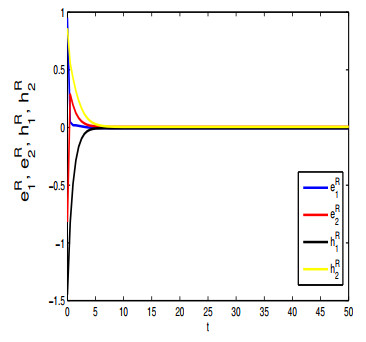









 DownLoad:
DownLoad:
